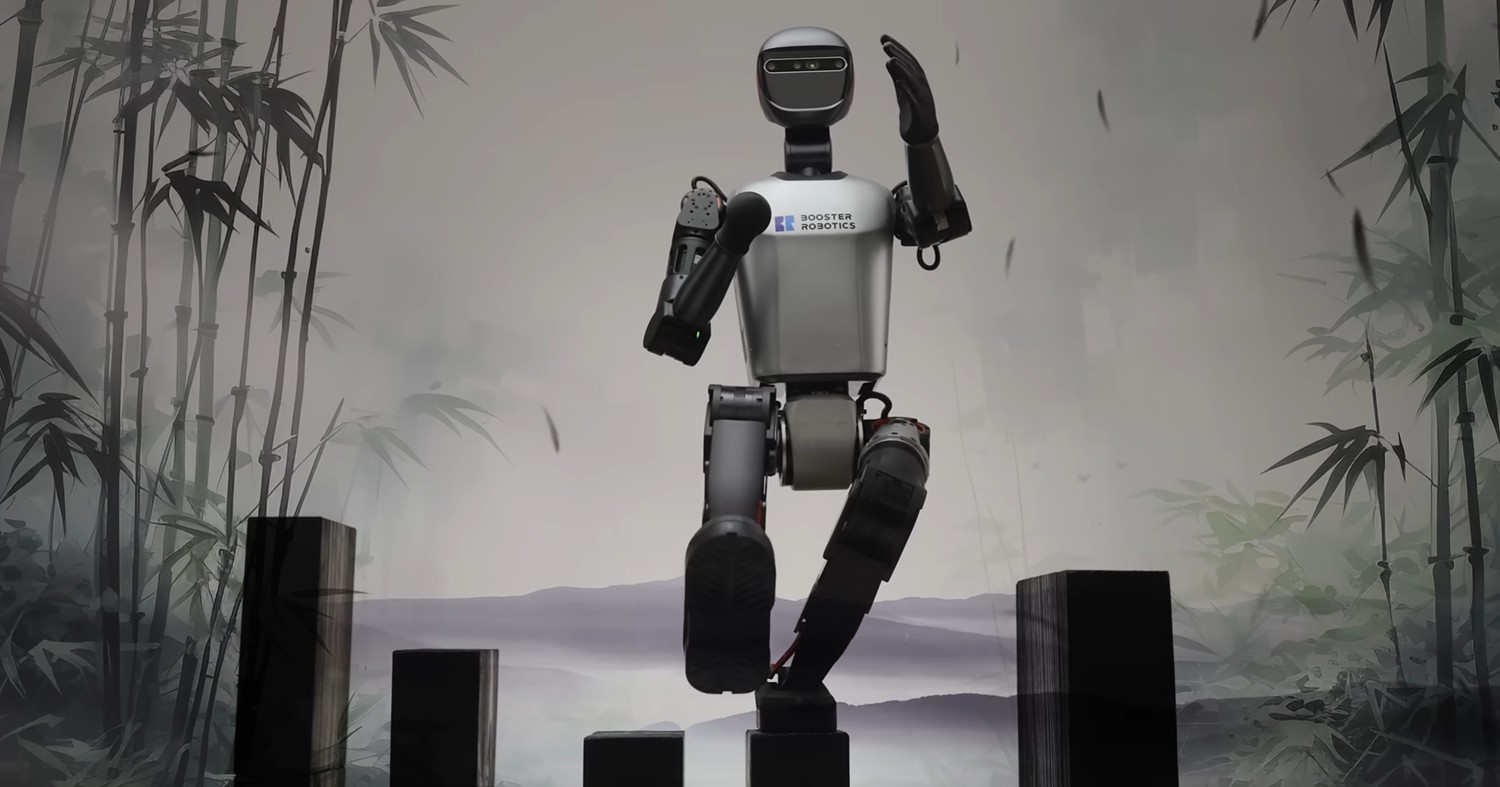K1 Humanoid
The K1 Humanoid robot is designed for education, research, and exhibitions. It features a compact body with 22 dynamically controlled joints, enabling precise motion control. The robot is equipped with a 3D depth camera, 9-axis IMU, microphone array, and touch sensors. It supports AI-based vision and voice command processing, obstacle avoidance, and real-time autonomous navigation. The K1 is programmable via ROS and Python.
Robot Specifications
- Key FeaturesKey Features
- Top Features
- Other Features
Weight
19.5 kg
Charging Time
≤ 1 hour
Battery Pack
48 V / 2Ah
Runtime
40-80 minutes
Dimensions
95 x 40 x 18 cm
User Interface
Voice, app, buttons
Connectivity
Wi-Fi 6, Bluetooth 5.2, Gigabit Ethernet RJ45
Battery Life
3-5 years (typical for lithium-ion batteries)
App Integration
Compatible with mobile apps for control and feedback
Cloud Integration
Yes, likely supports cloud services for data analysis
Compatible Devices
Not specified (likely compatible with standard devices)
Warranty Info
Not specified (typically 1-2 years for electronic devices)
Sensors
3D depth camera, 9-axis IMU, microphone array, touch sensors
Available Countries
Not specified (likely available globally through distributors)
Speed
Not specified (typical humanoid robots have speeds around 1-3 km/h)
Carrying Capacity
Not specified (humanoid robots typically do not have a carrying capacity)
Available Colours
Not specified (typically available in standard colors like white or black)
Image Gallery
Below images are from Booster Robotics's official sources




Review Videos
Watch expert reviews and demonstrations of this robot
More Robots from Booster Robotics
Explore other robots from this manufacturer
More Humanoid Robots
Discover more robots in the same category

T1 Humanoid
humanoid

Annie
humanoid

CyberOne
humanoid

GR-2
humanoid

T1 Humanoid
humanoid

Annie
humanoid

CyberOne
humanoid

GR-2
humanoid

T1 Humanoid
humanoid

Annie
humanoid

CyberOne
humanoid

GR-2
humanoid

T1 Humanoid
humanoid

Annie
humanoid

CyberOne
humanoid

GR-2
humanoid

T1 Humanoid
humanoid

Annie
humanoid

CyberOne
humanoid

GR-2
humanoid
Robots From Other Categories
Discover complementary robots from different categories that work well together

IZI Spectra Drone Camera 4K

DJI Mavic Mini Nano Drone

Skydio X2D

IZI Sky Pro 4K Camera Drone

Roborock Q5 Max+

Ecovacs Deebot T30S Combo

iRobot Roomba Max 705

Freo X Plus Robotic Vacuum Cleaner

IZI Spectra Drone Camera 4K

DJI Mavic Mini Nano Drone

Skydio X2D

IZI Sky Pro 4K Camera Drone

Roborock Q5 Max+

Ecovacs Deebot T30S Combo

iRobot Roomba Max 705

Freo X Plus Robotic Vacuum Cleaner

IZI Spectra Drone Camera 4K

DJI Mavic Mini Nano Drone

Skydio X2D

IZI Sky Pro 4K Camera Drone

Roborock Q5 Max+

Ecovacs Deebot T30S Combo

iRobot Roomba Max 705

Freo X Plus Robotic Vacuum Cleaner

IZI Spectra Drone Camera 4K

DJI Mavic Mini Nano Drone

Skydio X2D

IZI Sky Pro 4K Camera Drone

Roborock Q5 Max+

Ecovacs Deebot T30S Combo

iRobot Roomba Max 705

Freo X Plus Robotic Vacuum Cleaner

IZI Spectra Drone Camera 4K

DJI Mavic Mini Nano Drone

Skydio X2D

IZI Sky Pro 4K Camera Drone

Roborock Q5 Max+

Ecovacs Deebot T30S Combo

iRobot Roomba Max 705

Freo X Plus Robotic Vacuum Cleaner
Frequently Asked Questions
Get answers to common questions about this robot
Q1. How to troubleshoot K1 Humanoid?
Restart the robot, check sensor connections, verify WiFi or Bluetooth status, and consult error logs via the SDK. For persistent issues, update firmware or contact support.
Q2. How to set up K1 Humanoid?
Unbox the robot, place it on a flat surface, power on, connect via WiFi 6 or Bluetooth 5.2, and configure using the Booster Robotics app or ROS2 interface.
Share Your Feedback
Help us improve! Share your thoughts, suggestions, or report any issues.
No login required!
